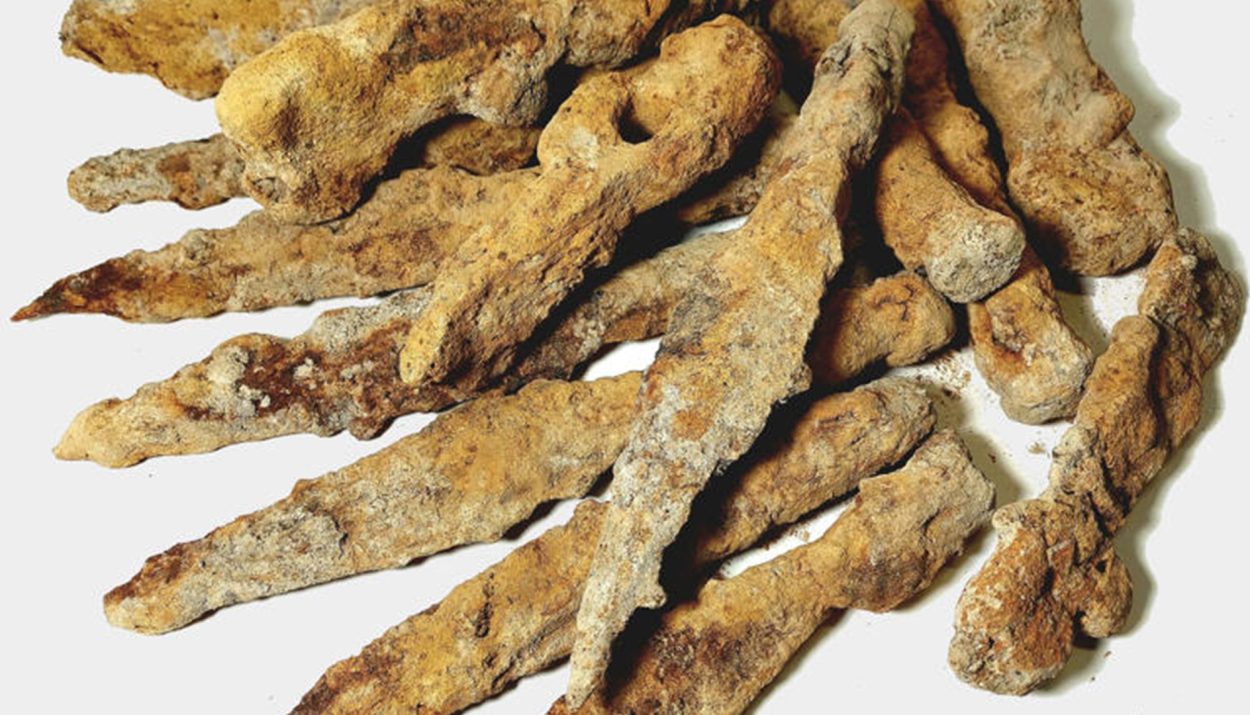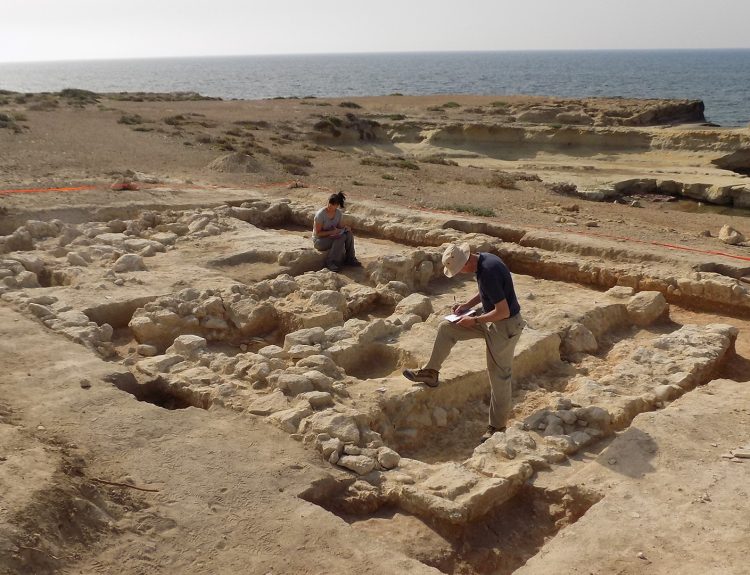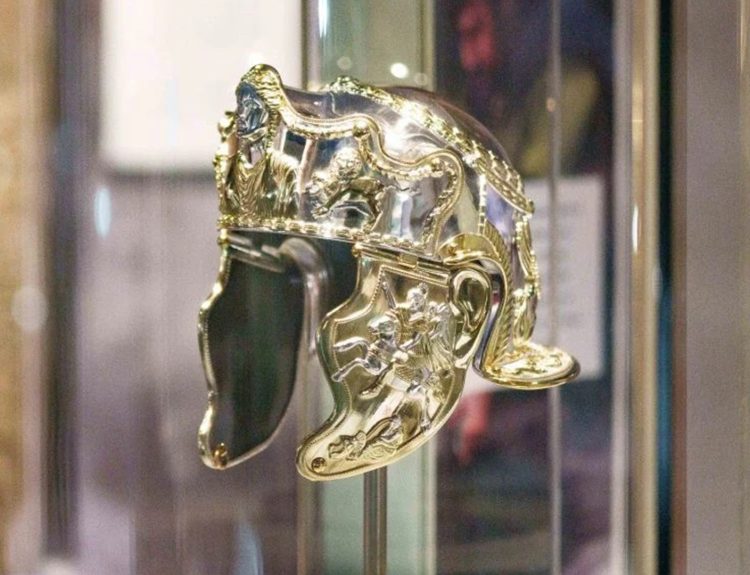Treasure hunter Mateusz Filipowicz was doing what he does best – searching the forests of Poland for ancient artifacts – when his keen eye spotted a rusty metal object on the ground, partially obscured by fallen leaves. When he stooped to pick it up, he saw another one. And another one.
In all, Filipowicz uncovered 15 iron objects that were all quite old. In fact, the expert archaeologists who examined the items believe they belonged to barbarian warriors living during Roman times. What are these weapons and who were the barbarians? Let’s dig into this newly discovered find.
A Surprising Discovery
In mid-January, Filipowicz was combing a state-owned forested area located outside Hrubieszow, a town in the southeastern part of Poland, when he made his amazing discovery. According to the conservator of the Lublin Provincial Conservator of Monuments, all of the objects were found clustered together.
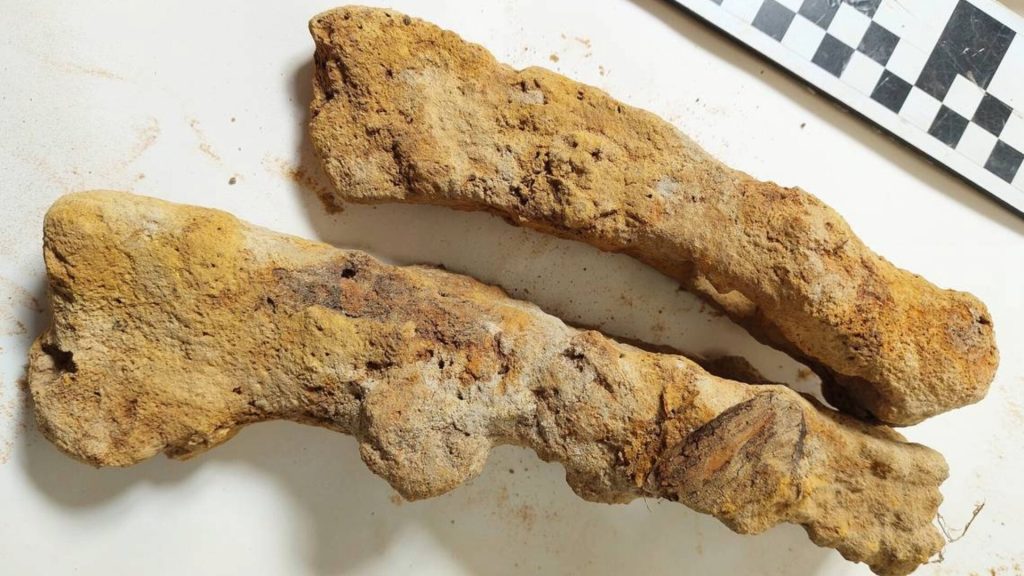
Filipowicz described the area in which he found the items as “swampy.” “At first, due to the very strong corrosion covering the metal, additionally mixed with sand and mud, it was difficult to determine what these objects were,” the conservator explained.
Retrieving the Artifacts
The Lublin Provincial Conservator explained in a statement released on Facebook that, “These circumstances led to the discovery of initially one object on the surface and another one a moment later.”

The statement continued, “Several kilograms of shapeless, muddy, corroded iron were safely packed and taken from the forest with the intention of cleaning and determining the nature of the find.” Once the archaeologists were called in to inspect the object, it was officially labeled an archaeological find.
Ancient Iron Weapons
Of the 15 items located in the cache, nine of them are spearheads. There are three axes – two battle axes and one carpenter’s ax – and three additional items remain a mystery. All of the artifacts are iron.

Filipowicz reached out to the Stanislaw Staszic Museum in Hrubieszow to report his discovery and to seek help from the experts in identifying and dating the artifacts. From there, archaeologists Bartlomiej Bartecki and Anna Hyrchala.
No Other Archaeological Sites in the Area
One of the first things that Bartecki and Hyrchala did was to consult the PAP, or the Archaeological Image of Poland. This is a database of all known archaeological discoveries at the provincial and national levels.

According to the statement issued by the Lublin Provincial Conservator, “Documentation shows that so far there have been no known archaeological sites in the area of the discovery of these artifacts.”
Cleaning and Analyzing the Artifacts
Next, Bartecki and Hyrchala went to work carefully cleaning the objects that Filipowicz found. They scanned and measured the items for documentation. Even before their analysis was complete, the archaeologists had a pretty good theory about the origin of the weapons.
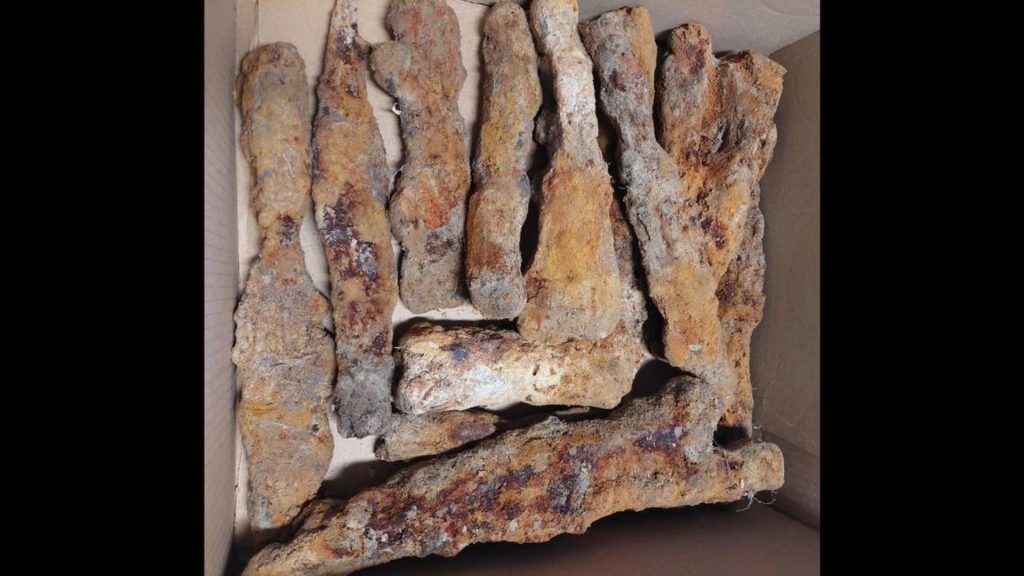
“First of all, we are most likely dealing with weapons used by barbarian tribes during the time of the Roman Empire,” the conservator’s statement explained. “Perhaps they were used by warriors who belonged to the so-called Przeworsk culture, identified by archaeologists as members of the Vandal tribe, or the communities from the Gothic cultures.”
Who Were the Przeworsk Culture?
The Przeworsk culture was a late Stone Age culture that lived in Central and Eastern Europe, including Poland, between the 3rd century BC and the 5th century AD. Archaeologists named this group of people after the Polish town where their artifacts were first discovered and identified.
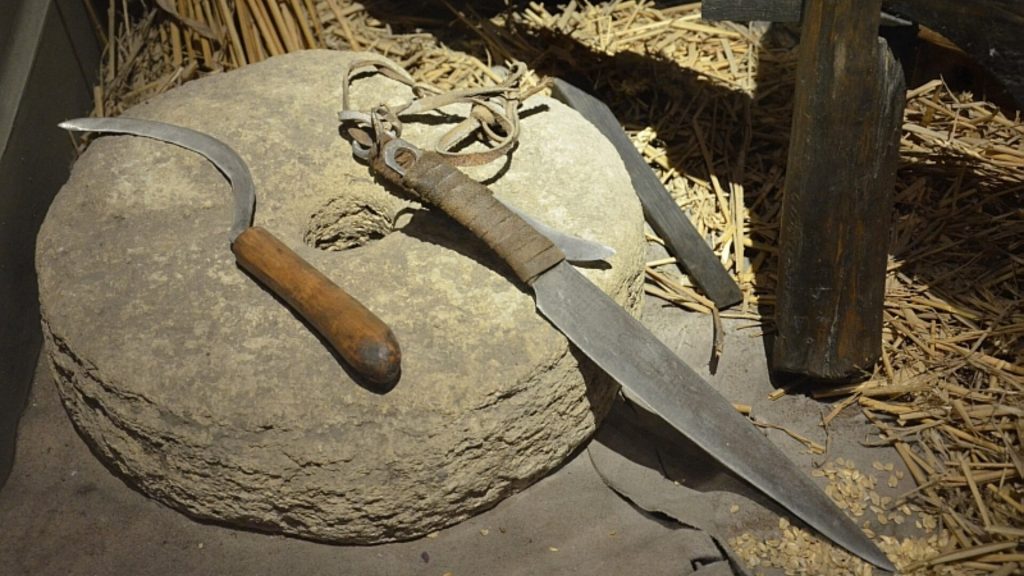
Archaeologists consider the Przeworsk culture to be pre-Slavic people. From the archaeological record they left behind, researchers have determined that they represented a mix of nomadic and permanent settlements. They were proficient in metalworking and skilled at making pottery. They engaged in trade with other European groups living at the time.
Who Were the Vandals?
The Vandals were Germanic people who originated in southern Poland in the 2nd century BC before spreading into North Africa, the Iberian Peninsula, and many parts of the Mediterranean. They established kingdoms and traded with other cultures, including the Przeworsk culture. In fact, the Vandals seemed to adopt traditions and beliefs from many of the people they associated with.

The Vandals were warlike and territorial. They were accomplished navigators with a sizable army and navy. During the 5th century, they seized Rome. The fall of the Roman Empire – at least the western part – can be attributed to the Vandals.
Who Were the Goths?
East Germanic people, the Goths came into being as a separate tribe of people in the first century AD. Researchers theorized that they came from a northern area, most likely Sweden, and settled around the Baltic Sea. The reason for this belief is that early descriptions of the Goth describe them as having light skin, blond hair, and blues, as well as being tall and athletically built.

The Goths were skilled at metalworking. In addition to iron objects, they created gold jewelry. A military powerhouse, the Goths battled with the Huns as well as the Romans. In fact, they also sacked Rome at one time.
Why Were the Przeworsk, the Vandals, and the Goths Called “Barbarians”?
Like today, the term “barbarian” is a bit of an insult. It was used by the Romans to label groups of people who were either foreigners, or who they believed were culturally and socially inferior to them. The ethnocentric Romans considered their own society to be superior to all others.

Barbarians could, therefore, refer to a group of people who didn’t speak the same language, worship the same way, or follow the same customs as the Romans. This belief made it acceptable, at least in the eyes of the Romans, to enslave and mistreat barbarians, whip out their culture, and force them to adopt Roman ways.
A Dropped or Hidden Cache
The manner in which the 15 artifacts were found by Filipowicz – clustered together in one location – has led both the treasure hunter and the archaeologists to speculate about the cache. There are no graves in the area, so the items were not buried with a warrior. Nor were they scattered about as if dropped during a battle.

The evidence suggests that the objects were initially in a bag of some sort. The entire bag was then dropped into the swamp, where the bag – likely made of cloth or leather – deteriorated away. What was left was a tight cluster of iron objects.
More Research Needs to Be Done
The archaeologists from the Stanislaw Staszic Museum in Hrubieszow are working to preserve the artifacts. As the Facebook statement explained, “Only after these procedures will it be possible to properly determine the nature of the discovery in question and its chronological and cultural affiliation.”

Additionally, plans are underway to do a more thorough excavation of the area where Filipowicz discovered the barbarian weapons. The researchers hope that there are other important artifacts waiting to be discovered there.

